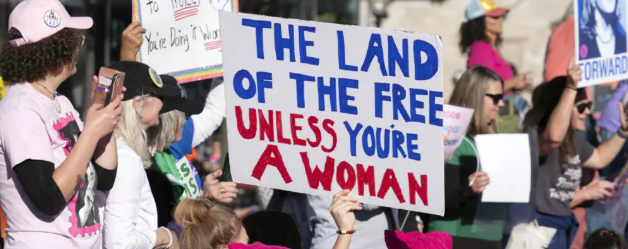Now middle-aged and with a family to support, government worker Gerardo Gonzalez has pursued a personal economic strategy familiar to countless Mexicans. Turning to credit cards to compensate for stagnating wages, Gonzalez has juggled multiple accounts, missed a couple payments, and even landed in the Credit Bureau. But the resident of the central Mexican city of Aguascalientes insisted he was not among frivolous people who use credit cards to party the night away or fly off to a beach resort on six-months, interest-free credit. The plastic money goes for expenses like cell phone bills, supplies for his cameras, computers for his children, and medical emergencies. "You never know when you need (credit cards)," Gonzalez observes.
Once a status symbol for the upper reaches of the middle class, credit cards became widely available in Mexico in recent years. According to the National Commission for the Protection and Defense of Financial Users (Condusef) the number of bank-issued credit cards jumped from 6.1 million to 26.1 million between 2001 and 2008.
Most debts wound up in the coffers of foreign-owned banks that charged annual interest rates averaging from 47% to 113% by early 2009, according to Condusef. Analysts estimate that financial corporations based in the United States, Spain, United Kingdom, Holland, and other nations effectively control 80%-90% of Mexican banking capital.
In a 2008 article published by the Americas Program, researcher and activist Peter Cervantes-Gautschi, co-director of the Oregon-based non-profit Enlace, described how the Clinton administration in the United States and the International Monetary Fund paved the way for the foreign take-over of Mexican banks as part of the 1994-95 bail-out of the Mexican economy.
Nowadays, Citigroup”s Banamex, Santander, HSBC, and other foreign-based outfits are the lords of Mexican finance. Mexico even serves as a springboard for international financial corporations expanding into other Latin American countries. In 2008, Banamex bought Grupo Cuscutlan, a financial institution with branches in Guatemala, Honduras, El Salvador, and Costa Rica.
Two landmark developments accompanied the credit card boom, greatly transforming the economic landscape in Mexico in recent years. First, banks spread to virtually all corners of the nation. According to the Mexican Bankers Association, some 10,800 bank branches existed in the country by the end of 2008. With more than 31,800 ATMs and 427,000 sales terminals, banks are filling virtually every nook and cranny of Mexican economic life. Plans are afoot to establish Internet banking in the Oxxo and 7-11 convenience store chains that are fast replacing the folkloric changarro, or mom-and-pop grocery store, once heralded by former President Vicente Fox as the entrepreneurial answer to joblessness.
Second, the greater availability of credit cards fit into a retail business model that is favored by the North American Free Trade Agreement (NAFTA). Well-versed in plastic money transactions, U.S. big box store chains sprouted up almost everywhere on Mexican soil. By 2005, Wal-Mart controlled 44.8% of the Mexican department store market and was the nation”s largest private employer. Perhaps not surprisingly, the Arkansas-based giant next plunged into the Mexican financial services market with its Banco Wal-Mart Adelante.
At first glance, the proliferation of banks and credit cards would seem to render obsolete the familiar lender available to economically-struggling Mexicans—the agiotista, or neighborhood loan shark. Yet the growing indebtedness of Mexican credit card users has actually created a new opportunity for the shadowy, high-interest lender. To pay off high-interest credit cards, some debtors look again to the agiotistas.
"Now there are even people who turn to (loan sharks) because they have a huge problem with banks," Gerardo Gonzalez said.
Mexico”s credit card boom was complemented by an explosion in the availability of other forms of credit-auto title loans, pawnshops, and payday-type loans. Even private student loans appeared as part of the expensive money mix.
In 1996, as part of its push to liberalize all manner of goods and services, the Mexican government opened up the pawn shop market. By 2008, an estimated 4,500 branches of privately-owned pawnshops were up and running, including businesses affiliated with the U.S.-owned First Cash Financial Services and EZCorp. Citing news accounts, Texas State Senator Eliot Shapleigh, a prominent predatory lending critic, noted in a statement that EZCorp—now a transnational company—netted a net income of $52 million from $457 million in revenues earned during 2008.
Blaring dance music into the streets, running Valentine”s Day "specials," and sometimes even stationing costumed, dancing promoters outside their doors, pawnshops are now a gaudy addition to the Mexican business scene. One company has even created a comic book-like character, "Super-Billete," or "Super Buck" to rescue consumers "in this time of crisis." More than two million Mexicans are officially without work, and cash-hungry Mexicans can wander down to the local branch of Prendamex or Prendalana to hock granny”s wedding ring at interest rates ranging from 130% to 156%.
With limited personnel and resources, the Mexican government is hard-pressed to regulate the plethora of new pawnshops and payday lenders.
In an interview earlier this year, Enrique Jose Castro Soto, director of the Guerrero state office for the Attorney General for Consumer Protection (Profeco), estimated that 150 pawnshops existed in the city of Acapulco alone. Castro said Profeco”s inspectors had checked 60 of the businesses to make sure the pawn lenders complied with regulations, including posting all consumer charges, carrying insurance, and offering legally-required contracts. Profeco personnel discovered irregularities in 32 of the 60 establishments checked, Castro acknowledged. The Acapulco pawnshops charged annual interest rates ranging from 60% to 300%, according to the federal official.
"Some are responsible, some not so much so," Castro commented.
As opposed to pawn shops, payday-type lenders exist in a sort of legal black hole between the Profeco-regulated pawnshops and Condusef-regulated banks and do not receive government oversight. Some wonder about the origin of the investment money needed to open all these new businesses.
As part of the first generation of Mexicans raised in the credit-card economy, Aguascalientes resident and recent university graduate Angelica Barba received her first card through the sponsorship of the institution of higher learning she attended. Displaying a savvy know-how about the advantages and disadvantages of credit cards, even Barba was surprised by the pawnshop boom.
"I”ve seen an incredible number of them in the last two months. I live in a middle class subdivision and the number of pawnshops is impressive," Barba said. "I have a friend who works in one and the amount of money made on interest from people who don”t want to lose their belongings is impressive."
A Model Made in the USA
The modern credit-based economy taking shape in Mexico was perfected long ago in the United States. As unions declined, inflation rose, and wages soured after the 1970s, North American workers compensated for their loss of wage income by relying on varied credit instruments offered by the burgeoning financial sector. Home and equity loans, cash advances, payday loans, credit cards, auto and student loans, and later subprime mortgages all became the defining parameters of an individual North American”s lifestyle. In contrast to the collectively bargained raises and benefits of previous decades, workers” standards of living were more and more determined via individual negotiations with a host of lenders. And the cost of the new economic relationship was not cheap.
A key turning point came in 1978, when the Supreme Court decision, Marquette National Bank vs. First of Omaha Service Corp, struck down the ability of states to cap interest rates on credit cards issued by out-of-state banks. Deregulation of financial institutions by successive Democratic and Republican administrations followed.
At the state level, the predatory lending industry thrived amid weak regulatory structures and friendly, cash-seeking politicians. In some instances, interest rates on payday loans hit an unheard-of level of 1,100%.
"The law against usury has existed from the time of the Babylonian Empire, and we have now dismantled it," wrote author Thomas Geoghegan recently in Harper”s magazine.
As with other social indicators in the United States, credit card and other debt was not color-blind. According to the National Council of La Raza, 13% of Latino credit card holders have interest rates over 20%, compared to only 7% of Anglo users stuck with the same high rate.
Across the United States, payday lending hustlers set up shop around military bases, low-income neighborhoods, and communities of immigrants and people of color. A 2003 study by the Southwest Center for Economic Integrity found 37% of payday loan storefronts in Pima County, Arizona, were situated within one-quarter mile of Latino communities.
According to Dr. Richard Wolff, professor of economics at the University of Massachusetts-Amherst, the capitalist class nearly reached "nirvana" in the political economy that predominated after the 1970s. Wages fell or stayed flat, work hours increased, and productivity went up. For capitalists facing a potential crisis of purchasing power in the consuming class, a neat remedy was found. "It”s in your wallet. It”s called a credit card," Wolff said recently on the Boulder-based Alternative Radio program.
According to recent U.S. press reports, 700 million credit cards circulated in the United States last year. Credit card debt jumped 25% during the last decade, amounting to nearly half of a $2.5 trillion U.S. personal debt load in 2008. The debt number excludes home mortgages. Delinquency rates on U.S. credit card accounts topped 5% at the end of the last year, with default rates continuing to climb upward during the first few months of 2009.
Wolff is among analysts who believe the working-class is now economically stretched to the bone. "It”s a population that has reached its limits. It cannot carry more debt or best online casino do more work," Wolff said.
U.S. consumers who once received piles of junk mail offering new credit cards are now apt to get cleverly-disguised robot calls from "Jessica," "Amber," or "John Stevens," promising lower credit card interest rates or supposed, interest-free loans.
In Mexico, credit card delinquency surpassed 10% during the first quarter of this year, with some reports suggesting the real rate was double the official figures. The crisis literally crossed borders.
Middle-class, credit card-carrying Mexicans who were accustomed to shopping in U.S. border cities encountered big trouble last fall after the peso began sliding into a 40%-50% devaluation at the same time credit card interest rates jumped. Shopping malls in El Paso, Texas, dependent on Mexican clientele, felt a big pinch. "We don”t get as much (business) as we used to get," lamented Ana Gonzalez, manager of the Shine women”s clothing store at El Paso”s Sunland Park Mall.
Essentially governed by the rules laid down by NAFTA and other trade agreements, the lives of the U.S. and Mexican working and middle classes were shaped by the same corporate investors, lenders, profiteers, hucksters, and political players on both sides of the border.
Reigning in the Lords of Credit?
In both Mexico and the United States, citizen and government initiatives have sought to reign in the worst abuses of the credit system. When credit card interest rates began creeping upward last year, groups in both countries began protesting the banks” credit policies. Mexico underwent a similar conflict during the 1994-95 economic crisis when interest rates shot through the roof, prompting the formation of a mass movement, El Barzon, which represented—and many times successfully defended—debtors.
But the latest protests in Mexico have been more fragmented, ranging from blogs that loudly protest usury to demonstrations in front of banks staged by teachers, supporters of opposition leader Andres Manuel Lopez Obrador, and others. Scattered calls for a credit card payment strike or a boycott of Banamex credit cards met with little public response. Banks bought time with some debtors, agreeing to restructure private debts with the blessing of Condusef.
Last year, some Mexican congressmen began proclaiming the need to cap interest rates. The end result was a watered-down law approved this year that gave the national Bank of Mexico more leeway to publicize interest rates as a tactic to encourage competition. Banks that stray from truth-in-lending practices could also be subject to relatively light fines in the future.
A similar trajectory occurred in the United States, where public anger was stoked by the multi-trillion dollar bailout of collapsing financial institutions by the U.S. Congress and the U.S. Federal Reserve.
Ranging from the ANSWER anti-war coalition to A New Way Forward, different groups staged demonstrations that variously demanded measures such as limiting interest rates or the nationalizing and breaking up of banks. Oregon”s Enlace group, an organization that works with immigrant workers, proposed taxing federal bailout money to help pay for emergency medical services threatened with cutbacks. Meanwhile, a new movement against usury and the securitization of debt stirred within churches, also partly based in immigrant communities and affiliated with the Saul Alinsky-inspired Industrial Areas Foundation.
More than a few respected voices backed the spirit of the nascent movement.
"We need to break up the too-big-to-fail banks," wrote Nobel Prize-winning economist Joseph Stiglitz. "There is no evidence that these behemoths deliver social benefits commensurate with the costs they have imposed."
On Capitol Hill, Independent Senator Bernie Sanders proposed legislation that would have capped credit card interest rates at 15% in most cases. Sanders” legislation was defeated in a 33-60 vote in the Democrat-dominated Senate last April. Twenty-one Democrats joined the Republicans in killing the measure.
"We think if we are giving low or no-interest loans and funds to all those banks, then they shouldn”t be allowed to turn around and charge exorbitant interest rates," said Sander”s aide Will Wilquist after the vote.
Instead of capping interest rates, the U.S. Congress approved and President Barack Obama signed a new law known as the Credit Cardholders Bill of Rights. Liberal commentators and mainstream media generally viewed the bill”s passage as a big blow for consumer rights. An Associated Press story even ventured to say the law will "revolutionize" the credit card industry.
A closer examination of the law reveals that while it will indeed end some of the most egregious abuses like raising interest rates on a customer who is late paying an entirely different bill and prohibiting retroactive interest rate hikes on existing balances, the U.S. legislation does not really prevent banks from charging the sky”s the limit for credit card purchases. Similar to rules that were already pending in the U.S. Federal Reserve anyway, the Credit Cardholders Bill of Rights does not kick in until 2010, thus giving banks plenty of time to gouge customers if they choose.
In both Mexico and the United States, the finance industry argued that capping interest rates would affect the ability of banks to provide credit to the greatest number of people possible, especially lower-income people who were in the direst need of extra cash. Politicians on both sides of the border not only bought this argument, but many others made by the banks.
In the United States, any challenge to the power of banks immediately slams into the revolving door between former congressional staffers and federal "regulators" who act as lobbyists for the financial services industry, as well as the mounds of campaign cash that banks and insurance companies lavish on senators and representatives.
Perhaps the most succinct quote capturing the political reality of the times was made by Illinois Senator Dick Durbin, who recently commented that banks "own" Capitol Hill. At the state level, the situation is not much different.
Critical of the recent gubernatorial appointment of former Cash America Vice President William White to chair the Texas Finance Committee, State Senator Eliot Shapleigh did not mince words. "In Texas, the fox is not in the henhouse. The fox owns the henhouse," Shapleigh declared.
Facing public scorn for high interest rates and widespread humiliation over the subprime disaster, the banks have nevertheless staved off potentially serious challenges to their power. But the credit card and broader debt crisis will not go away for millions of people on both sides of the border.
Like the historic movements to end child labor and win the eight-hour day, freedom from debt servitude is emerging as one of burning social issues of the 21st century. And in a time when financial services are globalized, any movement to overthrow the Lords of Credit must transcend borders in order to be successful.



